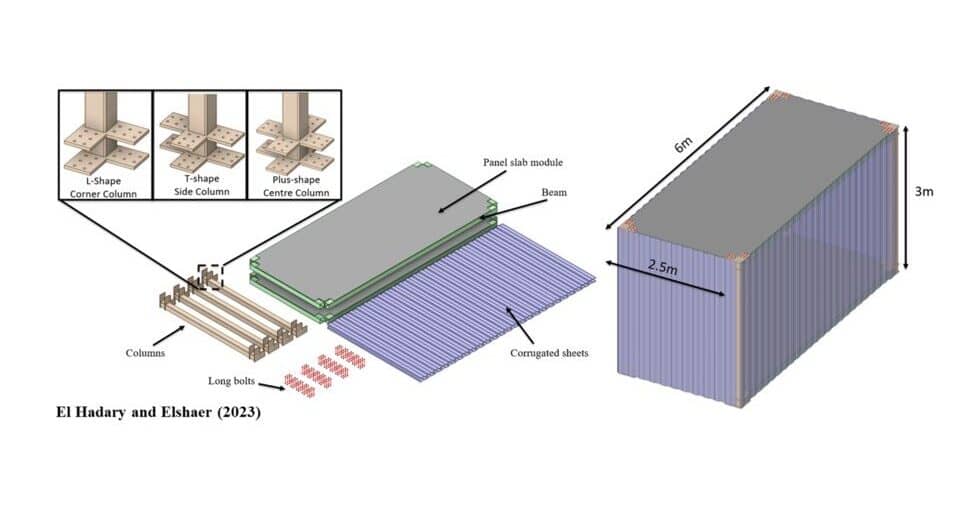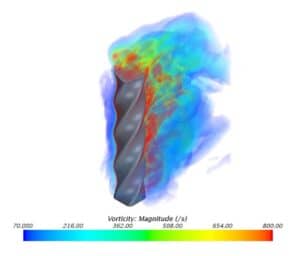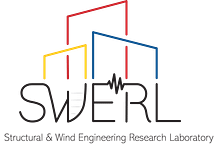 Supported by NSERC-DG, a research project was conducted (and on-going) to develop a modular construction solution that is tailored to address the Indigenous housing challenges in Northern Canada. Activities included climate hazard characterization for the region to account for climate change, assessment of various structural systems and materials for resilience against extreme wind loads and cold temperatures, and improvement of modular designs for efficiency and climate resistance. The research, carried out at SWERL, accurately quantified wind impacts on structures through Wind Tunnel (WT) testing and Computational Fluid Dynamics (CFD) models. Experimental testing, cold chamber tests, and finite element analysis were utilized to evaluate the structural and thermal performance of different systems and materials. The study optimized the modular design, identifying the best alternatives that enhance wind and thermal performance while reducing costs, leveraging advanced optimization and Artificial Intelligence (AI)-based regression techniques to improve Indigenous houses.
Supported by NSERC-DG, a research project was conducted (and on-going) to develop a modular construction solution that is tailored to address the Indigenous housing challenges in Northern Canada. Activities included climate hazard characterization for the region to account for climate change, assessment of various structural systems and materials for resilience against extreme wind loads and cold temperatures, and improvement of modular designs for efficiency and climate resistance. The research, carried out at SWERL, accurately quantified wind impacts on structures through Wind Tunnel (WT) testing and Computational Fluid Dynamics (CFD) models. Experimental testing, cold chamber tests, and finite element analysis were utilized to evaluate the structural and thermal performance of different systems and materials. The study optimized the modular design, identifying the best alternatives that enhance wind and thermal performance while reducing costs, leveraging advanced optimization and Artificial Intelligence (AI)-based regression techniques to improve Indigenous houses.
 An innovative aerodynamic optimization process aimed at mitigating wind impact on standalone tall buildings through shape modification was spearheaded. This robust procedure integrates a Computational Fluid Dynamics (CFD) solver for wind load analysis, a Genetic Algorithm (GA) for optimization, and an Artificial Neural Network (ANN) to pinpoint the building shape that offers optimal aerodynamic performance while adhering to specific architectural constraints to ensure the shape’s practicality. The method was applied to refine the design of tall building corners, as well as twisted and vented structures, and was expanded to enhance multiple objective functions by determining the “Pareto Front.” The optimization algorithm excels in identifying the global optimum, avoiding local extreme values, while the ANN efficiently captures complex variations in the objective function. Conducted at SWERL, this technique is adaptable for enhancing aerodynamic performance in various structures, including houses, bridges, and electricity transmission lines, and holds potential for non-structural applications in vehicles such as aircraft, cars, and motorcycles.
An innovative aerodynamic optimization process aimed at mitigating wind impact on standalone tall buildings through shape modification was spearheaded. This robust procedure integrates a Computational Fluid Dynamics (CFD) solver for wind load analysis, a Genetic Algorithm (GA) for optimization, and an Artificial Neural Network (ANN) to pinpoint the building shape that offers optimal aerodynamic performance while adhering to specific architectural constraints to ensure the shape’s practicality. The method was applied to refine the design of tall building corners, as well as twisted and vented structures, and was expanded to enhance multiple objective functions by determining the “Pareto Front.” The optimization algorithm excels in identifying the global optimum, avoiding local extreme values, while the ANN efficiently captures complex variations in the objective function. Conducted at SWERL, this technique is adaptable for enhancing aerodynamic performance in various structures, including houses, bridges, and electricity transmission lines, and holds potential for non-structural applications in vehicles such as aircraft, cars, and motorcycles.

One of the research directions at SWERL is dedicated towards focusing on understanding structural resilience against natural hazards by examining how structures behave under extreme conditions like colliding events and fire. The analysis of how tall buildings withstand wind-induced impacts, particularly the effects of pounding between structures in proximity, provided insights into the necessary gap distances and structural resilience to counteract such impacts. This research emphasized the use of Machine Learning (ML) to develop estimating analytical models for structural behaviors. Numerical methods were employed to investigate the consequences of water vessels colliding with electricity distribution lines, evaluating the resulting tension forces. Research was also conducted on evaluating structural deterioration resulting from fire exposure and exploring the potential for restoring structural capacity using Carbon Fiber Reinforced Polymer (CFRP). Another project delved into the resilience of reinforced concrete structures against progressive collapse triggered by seismic events, focusing on the capacity of surrounding slabs to preserve structural integrity through catenary action after the loss of a column.

